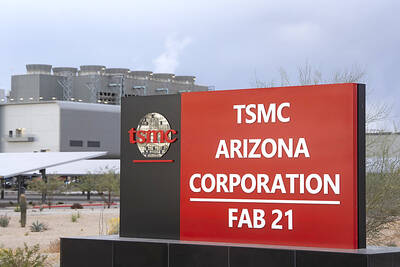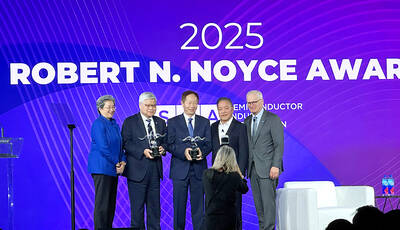Priced at just US$499, XYZprinting Inc’s (三緯) new 3D printer, the da Vinci 1.0, caused a stir at this year’s Consumer Electronics Show (CES) in Las Vegas, Nevada, wowing the editors of Reviewed.com, who selected it for an Editor’s Choice Award.
The firm’s entry-level 3D printer beat out 27 other products to earn the endorsement from the Web site, which presented the awards in partnership with show organizer the Consumer Electronics Association.
Judges praised the da Vinci 1.0 as an “affordable and approachable 3D printing” device, comparing it to products from other brands that use the same fused filament fabrication (FFF) technology, but generally cost more than US$1,400.
XYZprinting, a unit of Taiwanese electronics conglomerate Kinpo Group (金仁寶集團), is scheduled to start shipping its da Vinci 1.0 printers to China this month, with the product to debut in Japan and the US next month, and in Europe in March, chairman Simon Shen (沈軾榮) said last month.
The company has set a 100,000-unit global sales target for printers for this year and 1 million over the next three years, Shen said.
Last year, there were only a handful of 3D printing companies at the CES gadget expo, but this year, there were 30 and there would have been more if organizers had not turned others away because they could not fit them in.
The 3D printing area of the show floor drew dense crowds that gawked at the devices and their creations, which ranged from toys to tea cups to cases for Apple Inc’s iPhones.
With 3D printing, “we’re moving to a world of mass customization,” Consumer Electronics Association analys Shawn Dubravac said.
What started with custom-printed T-shirts in the style of CafePress can now happen in all kinds of industries, he said, but added that it is still a small field and he expects that just fewer than 100,000 3D printers will be sold this year.

Shiina Ito has had fewer Chinese customers at her Tokyo jewelry shop since Beijing issued a travel warning in the wake of a diplomatic spat, but she said she was not concerned. A souring of Tokyo-Beijing relations this month, following remarks by Japanese Prime Minister Sanae Takaichi about Taiwan, has fueled concerns about the impact on the ritzy boutiques, noodle joints and hotels where holidaymakers spend their cash. However, businesses in Tokyo largely shrugged off any anxiety. “Since there are fewer Chinese customers, it’s become a bit easier for Japanese shoppers to visit, so our sales haven’t really dropped,” Ito

The number of Taiwanese working in the US rose to a record high of 137,000 last year, driven largely by Taiwan Semiconductor Manufacturing Co’s (TSMC, 台積電) rapid overseas expansion, according to government data released yesterday. A total of 666,000 Taiwanese nationals were employed abroad last year, an increase of 45,000 from 2023 and the highest level since the COVID-19 pandemic, data from the Directorate-General of Budget, Accounting and Statistics (DGBAS) showed. Overseas employment had steadily increased between 2009 and 2019, peaking at 739,000, before plunging to 319,000 in 2021 amid US-China trade tensions, global supply chain shifts, reshoring by Taiwanese companies and

Taiwan Semiconductor Manufacturing Co (TSMC, 台積電) received about NT$147 billion (US$4.71 billion) in subsidies from the US, Japanese, German and Chinese governments over the past two years for its global expansion. Financial data compiled by the world’s largest contract chipmaker showed the company secured NT$4.77 billion in subsidies from the governments in the third quarter, bringing the total for the first three quarters of the year to about NT$71.9 billion. Along with the NT$75.16 billion in financial aid TSMC received last year, the chipmaker obtained NT$147 billion in subsidies in almost two years, the data showed. The subsidies received by its subsidiaries —

Taiwan Semiconductor Manufacturing Co (TSMC) Chairman C.C. Wei (魏哲家) and the company’s former chairman, Mark Liu (劉德音), both received the Robert N. Noyce Award -- the semiconductor industry’s highest honor -- in San Jose, California, on Thursday (local time). Speaking at the award event, Liu, who retired last year, expressed gratitude to his wife, his dissertation advisor at the University of California, Berkeley, his supervisors at AT&T Bell Laboratories -- where he worked on optical fiber communication systems before joining TSMC, TSMC partners, and industry colleagues. Liu said that working alongside TSMC